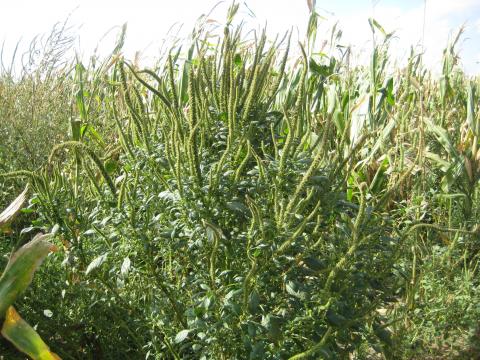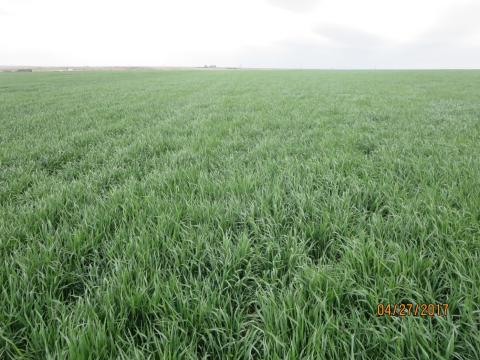Why Control of Volunteer Wheat is Critical to Protecting 2018 Yields
July 13, 2017
Timely control of volunteer wheat and other weeds is key to managing yield loss risk in your 2018 crop. Yield-limiting risk factors affected by weed control include wheat streak mosaic and other diseases, insects (wheat stem sawfly and disease vectors), moisture loss, and increased weed seed production.

Dicamba Injury Symptoms on Sensitive Crops
June 28, 2017
Dicamba-resistant soybean, genetically engineered to provide resistance to dicamba and glyphosate, was made commercially available for the 2017 growing season. This article looks at potential dicamba injury to sensitive crops and plants.
Cephalosporium Leaf Stripe Developing in West Central Wheat
May 25, 2017
Cephalosporium stripe, caused by a soilborne pathogen, is developing in wheat in west central Nebraska and may reduce yields if severe.
Watch for Palmer Amaranth in Conservation Reserve Program (CRP) Fields
May 12, 2017
Palmer amaranth has not been confirmed in conservation plantings in Nebraska; however, the identification and occurrence of Palmer amaranth in CRP fields in Iowa has raised concerns among weed scientists and growers about its spread into conservation plantings in Nebraska and offer some suggestions for growers.
Spraying the New Phenoxy Herbicide Formulations in Xtend and Enlist Soybeans Will Present Challenges
May 11, 2017
The new phenoxy herbicide formulations, including Enlist Duo™ (Dow), XtendiMax® (Monsanto), Engenia™ (BASF), and FeXapan™ (DuPont), offer growers new management options along with new application requirements. To alleviate problems related to applying new phenoxy herbicide formulations in soybeans as well as to increase herbicide performance, manufacturers have established application requirements. Here we discuss some of the key application factors to consider.
Be Patient When Assessing Winter Wheat Damage
May 5, 2017
Additional time is needed to properly access the injury and potential yield loss of Nebraska winter wheat, given the cold temperatures that followed last week's below freezing temperatures, heavy wet snow, and high winds. It takes at least a week to 10 days of warm temperatures to make a quality assessment.
Assessing Freeze Injury to Wheat
April 27, 2017
As temperatures dropped below 28° F at a number of sites this week, the authors address how to assess whether freeze damage has occurred.
Fertilizer Price Changes from 1994-2017
April 25, 2017
Fertilizer, one of the major costs in crop production, changes more in price each year than many other input costs. This articles addresses how farmers can reduce their fertilizer costs by selecting the most economical source for the fertilizer they need.







